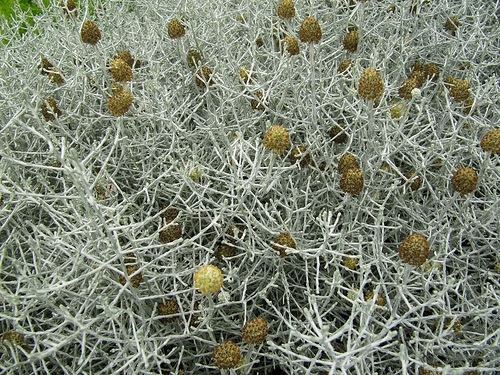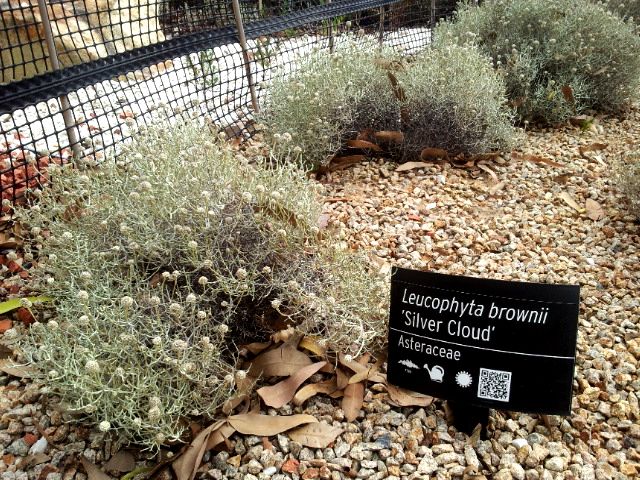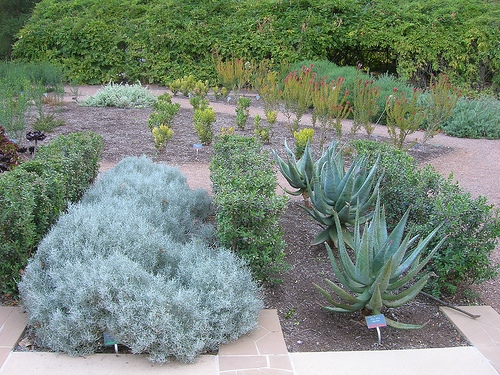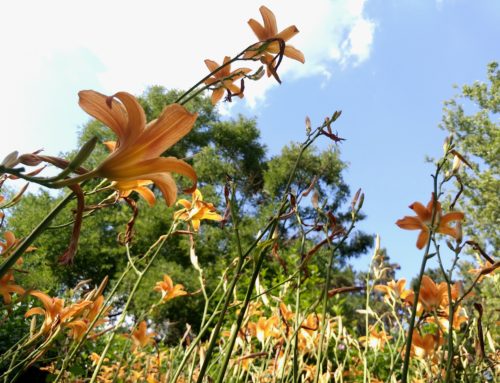Calocephalus (Leucophyta) brownii – A Cushion Bush
Today, Calocephalus (Leucophyta) grows around the globe, but this naturally perennial plant grows foremost in Australia, its native continent. Its color is silver, habitus globe-like and structure resembles a pin cushion. Hence the common name: Cushion Bush or Silver Cloud.
Calocephalus or Leucophyta brownii?
Some gardeners know it as a Leucophyta sp., others as Calocephalus sp. Still, it is usually best known as a Cushion Bush or as a Silver Cloud, due to its spiky, airy looks. Although this silvery Aussie became a real globetrotter, you might wanna read instruction or two before growing it on any other continent.
So, one of the 2016 flower market novelties in Serbia is this unusual shrub/flower species – Calocephalus brownii (Leucophyta brownii). Being grayish, globular and structural, it does look like a herbaceous pin cushion. Hence the common name: Cushion Bush or Silver Cloud.
Calocephalus in Europe
In continental Europe, Leucophyta grows as an annual flower, because in such climate it does not tolerate temperatures below 7 °C. Hence, it is necessary to protect the plant during the winter period in that type of climate.
The Calocephalus genus is a part of the Asteraceae family, it looks bushy and upright, with bent lower branches and can reach up to 50 cm height. Numerous intensively silvery-gray twigs are thin (up to 0.5 cm wide) and evenly distributed. Leaves are small, quite numerous, and those at the top resemble needles.
Small globular flowers grow out of thin branches, being silver-gray in the juvenile stage, yet becoming pinkish as they mature.
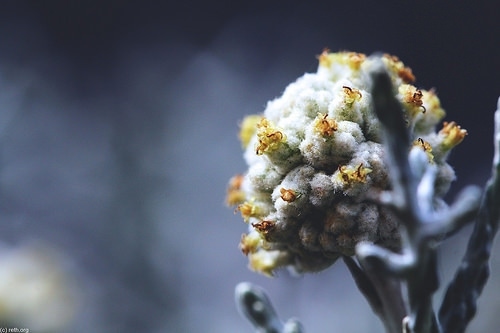
Flower bud Calocephalus sp. Photo by der-kruemel
Cushion bush garden use
It is widely used mostly for planting in flower pots, containers or flower beds. Unique habitus and intense color can create a striking highlight or the contrast combination with other flower species (like Iresine sp.). Furthermore, it is great for combining with other floral species. As a result – Calocephalus is a highly decorative plant.
Calocephalus is a structural type of flower. One can use it in the mixed planting with other (floral) plants, or as an individual species in flower beds.
Use it as an accent point, a part of well-maintained lawn – in any of these cases your garden will achieve excellent aesthetic and visual impression. A moderate growth pace allows this plant to become light, airy and spherical.
Growing technology
It grows well at sunny positions, in loose soils, with moderate watering and frost protection on temperatures below 7 ºC.
Propagation: by sowing and by cuttings. Production by cuttings is a more usual method.
You should cut twigs during January in cold protected area (greenhouse). You make a cutting from a top part of a twig with at least two internodes, which should be put into a substrate at 20 ºC, so the rooting could begin. After root system has finished its forming, cuttings should be transplanted to pots. Fourteen days later temperature is going down to 16-18ºC.
At this stage, you do the pruning, in order to initiate lateral branching. From February to May, the plants undergo a so-called cold production phase at a 10-15º C temperature.
It’s a common practice to plant rooted cuttings directly into pots, or hanging baskets. This way, if you plant several cuttings together, you will get an instant effect of larger and more abundant, luxurious flower pot on the market.
Think about this great flower/bush, it can be a surprisingly effective, yet simple-colored accent plant.
By: Agnes Potkonjak

